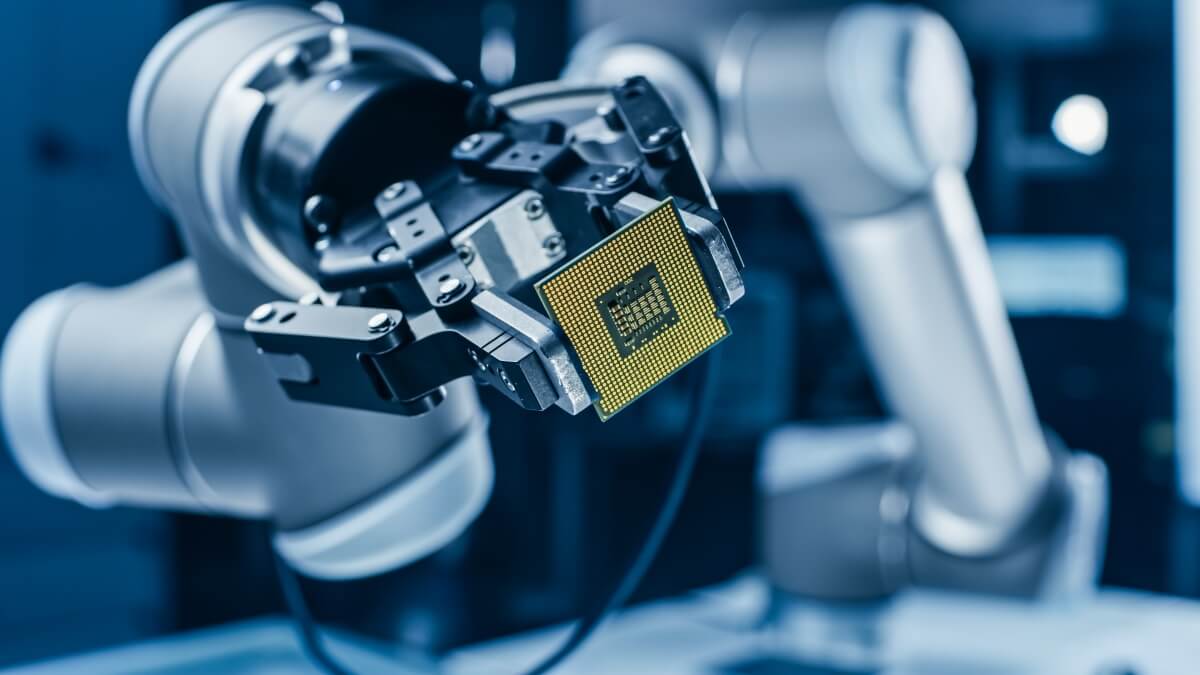Overview
Edge AI chips have become an appealing answer for AI applications and IoT gadgets.
This has largely come about because Edge computing has established itself as an attractive solution for the IoT, providing high-quality, actionable sensor data in a quick, energy-efficient manner.
To fully realize this potential, researchers and industry leaders alike have been racing to develop new, specialized chips that can complete computationally demanding tasks on-device.
What are Edge AI chips, and how do they relate to the IoT?
One of the hottest trends in chip technology today is Edge AI, and it’s booming.
Edge AI chips process data at the network’s edge, which means they can work on a device without any connection to the cloud.
In the past, it wasn’t common for computations to be done locally or on devices. This was mainly because when attempting to house the AI, the power drain, cost, and especially the size had to be considered. It was simply too large (physically large) to be placed in a device.
Today, this is no longer the case, and Edge AI chips continue to shape and transform the way computations are done.
This is mainly because Edge AI chips are physically smaller, making them much more efficient.
Edge AI chips are also more affordable, consume less power, and produce less heat. These factors enable Edge AI chips to run on handheld devices like smartphones and can go as far as being integrated into robots and many other IoT devices.
As devices with built-in Edge AI chips have been empowered to do local processor-intensive AI computations, the role of the Edge AI chip is to lessen or remove the need to transfer a significant amount of data to a remote cloud server.
By eliminating this need, Edge AI chips bump up performance speed, security, and privacy bringing IoT device functionality to its highest level. As a result, Edge AI chips have become a vital part of finance, transportation, healthcare, and the manufacturing industry, to name just a few. These sectors now rely heavily on Edge AI chips within their IoT devices to operate more efficiently daily.
The Edge AI chip industry is poised for growth
Millions of dollars in venture funding are being put into tech startups to produce Edge AI chips. And this isn’t just a flash in the pan, as chip funding is expected to grow even more in the years to come.
For context, as of 2020, approximately 750 million Edge AI chips have been sold, creating about 2.6 billion USD in revenue.
As a result, Edge AI chips are on their way to being found in many consumer IoT devices such as advanced smartphones, smart speakers, wearables, tablets, and Smart Video Doorbells.
But this growth doesn’t begin and end with consumer devices. AI chips are also expected to enter multiple enterprise markets, especially in the form of sensors, cameras, robots, and a wide array of IoT devices.
While both the consumer and enterprise markets are set to boom, it’s important to note that the consumer Edge AI chip market, while vast, is forecast to grow at a slower pace than the enterprise market. Meanwhile, the enterprise Edge AI chip market, which is smaller than the consumer market, is expected to grow at an incredible rate in the coming years.
As can be seen, Edge AI is becoming more pervasive and far-reaching across many industries and markets. A large part of this growth is due to Edge AI chips working in unison with the IoT.
Edge AI chips and the IoT
Edge AI chips are an excellent solution for the IoT because they help manage the tidal wave of data produced by these devices. But, before we discuss the impact of Edge AI chips, let’s first explore what makes a device an IoT device.
The Internet of Things (IoT) is defined as a network of intelligent objects capable of automatically organizing and sharing information, data, and resources, as well as making decisions and reacting to changes in their environment. The IoT brings everyone and everything together by allowing users to connect and engage with almost anything globally.
The IoT has been true to this promise and has contributed to an upsurge in smart devices in various industries.
For a device to be considered part of the IoT, it must have the ability to collect data about its environment through embedded sensors.
The problem with this is that it creates huge datasets, especially when many sensors are interconnected in an IoT network. Additionally, these datasets must be analyzed quickly enough to achieve any form of efficiency. This brings us to the point of deciding what type of computing is best for the job.
Cloud computing outsources data tasks to remote servers over the internet instead of using local servers at the Edge. This type of computing is suitable for many purposes, although there are disadvantages that go along with it.
Some issues associated with cloud computing are lower bandwidth, problems with privacy, and high latency.
Since Edge computing deals with data closer to the source, it puts forth a very different case.
Edge computing provides a sustainable solution for more time-sensitive applications and clears a path for AI tasks on the device.
If computations are done at the edge of a network, bandwidth and communication resources remain unspent. As a result, IoT devices working with Edge AI chips can provide a lot of IoT gateways. This means that rollups of data from various devices will be combined, and only data that needs to go to the cloud is sent away.
When used in conjunction with Edge AI chips, the massive amounts of data generated by the IoT can be dealt with, allowing the IoT to reach its full potential.
Now, many IoT sensor devices still use traditional processor chips, which puts users in a pickle.
Traditional processor chips don’t exactly meet the standards when performing everyday tasks that sensors need to work correctly on the Edge.
That’s why startups are deploying cutting-edge AI chips to address this issue.
Edge AI chips benefit end users
Edge AI chips offer many opportunities, especially when considering IoT applications. Here are a few:
Edge AI helps resolve issues regarding privacy and data security
As Edge AI chips analyze data locally, they mitigate the risks of important data getting intercepted as data is more vulnerable to hacking in transit. Additionally, AI can filter out data irrelevant to the use case, decreasing the likelihood of transmitting sensitive but unimportant data.
Take, for example, how a HomeCam with an Edge AI chip on board can reduce privacy risks by filtering out video segments that are not relevant, only sending the important reels up to the cloud.
Edge AI helps resolve issues of low connectivity
There are several cases where connecting a device for cloud processing is unfeasible. Take drones, for example.
Maintaining connectivity with drones is difficult, especially if they need to operate in remote locations. Not only that, but maintaining a connection to the drone and uploading data will significantly reduce its battery life.
Edge AI chips help devices that need to function in low connectivity environments by operating offline and under extreme power constraints.
Edge AI can help deal with huge amounts of data
IoT devices yield massive amounts of data. For example, HomeCams alone generate about 2,500 petabytes of data daily globally.
For context, petabytes are exceptionally large units of data. Estimates hold that just 1 petabyte equals 500 billion pages of standard printed text or 20 million tall filing cabinets.
Sending petabytes upon petabytes of data to the cloud will cost a pretty penny.
A viable solution is to place machine learning processors at the network’s edge, which may include placing cameras or sensors within products such as HomeCams, Smart Video Doorbells, and other IoT devices. When Edge AI chips are embedded, devices can process data in real-time and filter out irrelevant information, saving bandwidth and storage costs.
Edge AI can address latency issues
AI computations done at a remote data center will always result in latency of at least 1 to 2 milliseconds at best and could result in tens or hundreds of milliseconds at worst.
Using an Edge AI chip brings that count down to mere nanoseconds.
Take, for example, autonomous vehicles.
Autonomous vehicles need to gather and process enormous amounts of data from vision systems and sensors that control their functions. Low latency is essential for these vehicles to operate safely when considering acceleration, turning, and braking.
Edge AI chips benefit all IoT users
The AI chip industry is predicted to increase from 6 billion USD in 2018 to approximately 90 billion USD by 2025. Undoubtedly, companies that produce Edge AI chips will benefit financially. But, of course, end users will benefit tremendously.
Edge AI chips can not only improve what current devices can do, but they can also incite completely new devices and innovative use cases. One sure thing is that the proliferation of Edge AI chips will spur significant changes for consumers and enterprises alike.
Thanks to Edge AI, consumers can enjoy low latency on all their IoT devices without needing an internet connection. At the same time, enterprises can empower companies to level up their IoT apps, taking them to new heights.
Since Edge AI chips help smart machines run their workloads, all existing markets will end up benefiting from the expansion of Edge AI chips.



